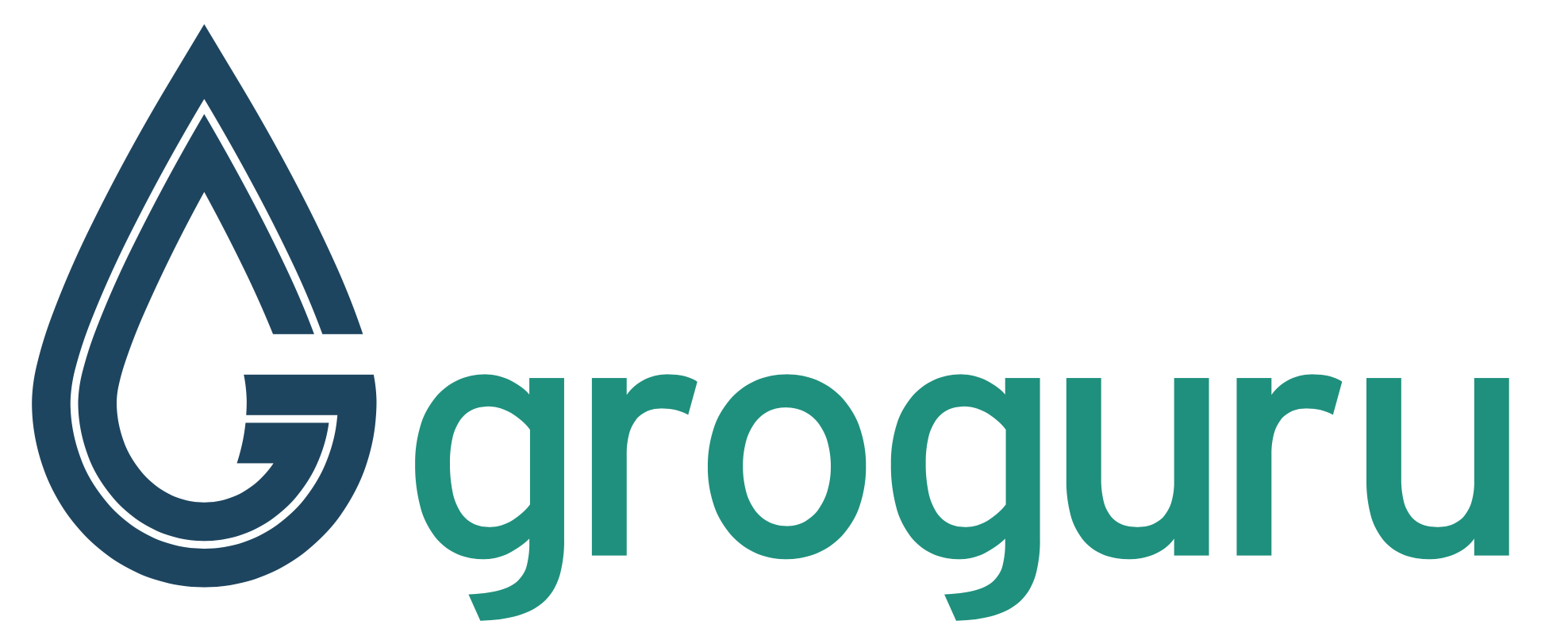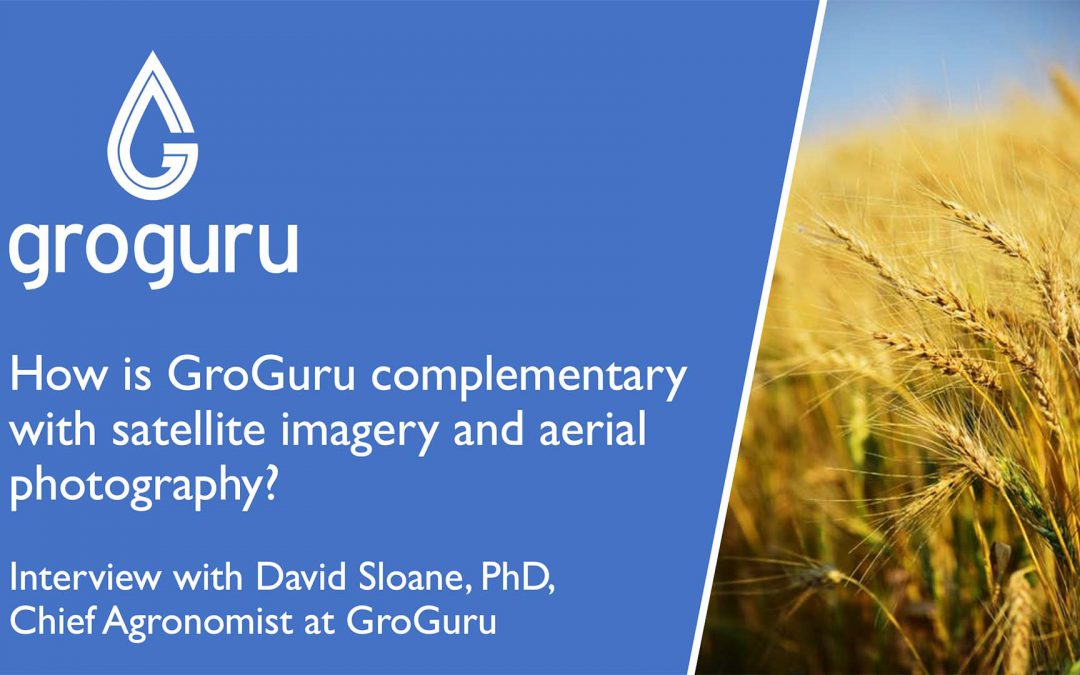How is the GroGuru solution complementary with satellite imagery and aerial photography? In a few ways! In this interview clip with Patrick Henry, CEO, and our Chief Agronomist, David Sloane, they discuss the various tech specifics of how the GroGuru underground system works with satellite imagery. Watch the clip here:
Patrick: Let’s shift gears and talk about aerial photography and satellite imagery. There is NDVI and magnetic resonance technology. There are different kinds of ground-penetrating radar technologies. Can you talk about what those technologies do and compare and contrast that to what you get with soil sensors?
David: A really common remote imagery, whether it’s satellite, plane or drone, is NDVI. You are looking at the red and near infrared ration, which is looking at the amount of plant cells. Plant cells absorb the red light and reflect infrared. The soil does the reverse. You can see how many plant cells are out there. That’s great for looking at variability
around the field.
I’ll give you an example. If I have a very vigorous part of the field, I might say, “This is fantastic.” It’s a little bit like getting in my pickup truck and doing 80 miles per hour down the road. If I’m not watching the gas gage, I could run out of gas. If I
have a really vigorous crop, it may be running out of water faster than what I think. I need to look underground and check the gas gage as well. I need to see what’s going on with the soil moisture. I need to see what’s going on with the
root system.
Just because it’s vigorous on top doesn’t necessarily mean it’s vigorous underneath. I need to know where
the water is going. If I’m not looking underground, I don’t know whether the water has penetrated to refill my root zone. I need to know how deep that is. I also need to know that I’m refilling it. I need to know the effective rainfall
as well. Looking on top is fantastic to look at the variability, but it’s only half the story.
You can’t diagnose a problem if you’re not looking underground. The other thing about soil moisture sensors
is that you’re taking readings every 15 or 30 minutes through the day and night so that you can watch the plant drink. It’s like taking its pulse. You know the speed of growth. It’s not a snapshot in time. If I take a picture, it’s a
snapshot. I might come back tomorrow or seven days later and take another snapshot.
Anything can happen in that time. Whereas, if I’m watching where I am today and how I got there, I can see
how the plant is setting up. Then I have a much better way of heading off issues. Remote sensing is 20/20 hindsight. It shows you where the problems are and where to look, but it doesn’t help you look forward and plan out what’s to come.
What we’re about is setting up an irrigation template that is a roadmap for success. It will give you guidance, not just being able to look back at how you got here, but also give you a pathway forward to get the best yield and quality.
There are other forms of remote sensing. There is spatial mapping and electromagnetic resonance surveys. They will tell you variability out in the field from looking at different soils. You can look at topography. You can look at all of these things. They all matter. They all come together. They all fit and help each other. If I’m a farmer, I want to use all the tools in the toolbox. The tool I’m going to go to the most is soil moisture monitoring because that is the heartbeat of the
plant. That plant can teach me what it needs and how to deal with it better so that we get a much better result.
Patrick: I’ve heard the argument that the aerial photography satellite imagery gives you this broad-scale view. That gives you a bigger benefit compared to a soil moisture sensor, which is a very narrow view. What would you say about that?
David: I think that aerial imagery does give you a broad view. It helps catch the problems. For example, if I have a blocked nozzle on a center pivot, I’m going to see a ring around that pivot that’s low vigor. It’s going to stand out. I can go out there, and sure enough, identify the problem and fix it. There is value in that.
If I have a drip system and I see that there is a stripe through the field, I might have a blocked pipe. I can go and fix it. There is value in that. It helps get some uniformity out there, but it doesn’t necessarily help you raise the bar. What we’re about is helping you become a better farmer by watching and reacting to the plant itself.
Through my experience, what I’ve found is that you can model things. You can think that you know what the plant needs, or you can listen to the plant. The plant will tell you what it needs. You just have to know how to listen to it and read the signatures.
Patrick: You have a broad-scale better rearview mirror with these various aerial photography satellite imagery methods. It helps with problem identification. Soil moisture sensing, as well as what we do in the cloud from a machine learning perspective and adding additional information is complementary to that, but it’s more diagnostic and prescriptive. It looks forward in terms of how to do strategic irrigation management. Is that a good paraphrase?
David: I’m always going to need to ground truth an aerial image. It’s going to show me variability within the field. I’m going to go out to a high spot and see what it’s like. I’m going to go out to a low spot and see what that’s like. I’m still going to have to go out there. If I have a point in that field where I’m monitoring in great detail, in real time, and I know exactly what’s going on there, then I can know how that spot relates to the rest of the field. No doubt, I’m better off.
They are very complementary technologies. What aerial imaging will tend to do is narrow the standard deviation. It will keep things more uniform, but it won’t necessarily keep you in the zone to raise the average. What we’re about is raising the average and doing it fundamentally better, not just more uniform.

